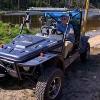Front suspension, heim joints, ball joints, etc,
-
Similar Topics
-
By A P
Hi
I have a 2022 hisun sector eps 550. 30amp fuse is blown for eps. Checked the motor and it’s fine. Opened up the controller and found a bad diode. Dealer wanted 500$ for the controller. Just posting this in case it helps someone. I couldn’t read numbers from the old one so just took a guess and replaced it with a 100v 3amp diode.
-
By CRV
I’m need a couple parts. Diff. Lock Actuator mainly. But I would like to find a donor that maybe has bad motor or something along those lines.
if anyone has or knows of anything please holler at me
thanks Randy
-
By Robbie Wyre
I'm working on a 2005 Cub Cadet side by side and I'm trying to remove the front two axles. I have a slide hammer puller on the inner joint and with all my strength they will not budge. Anyone have the same issues and is there something I'm missing or a trick of some sort to pull these out? Any suggestions please and thank you.
-
By mhill
I purchased a 2008 American Sportsworks Subaru TW265 UTV, with no manual and no previous knowledge. When idling, the steer column shakes uncontrollably, is very noisy, and might be from vibrations from the engine. Logically, I am thinking engine vibration moving up the steering column. I found a schematic, but that has not helped in identifying the specific problem.
Any thoughts? Suggestions?
Thanks so much
-
-
By bfisherman11
In 2016 I bought a midsized Ranger ETX. I don't recall exactly my out the door price but it was probably less than 8k. I've used it as a work machine around our home and 38acres. It's always run great and requires little maintenance. Still running strong.
So, for no reason I checked out a local dealer. I like the midsized UTVs so that's where I started. I was shocked the cheapest 570 I saw was a shade under 18k. I know an ETX Ranger was a budget SxS but wow, that's a 10k jump. When I was shopping back in '16 I think a 570 was about 1k more than my ETX.
Well I guess I will be running this ETX till it breaks.
Anyhow, I'm a big fan of the Rangers. When the time comes I'll be back but I had no idea. I haven't posted in a while. The ETX must not have sold a lot because you don't see many things posted. Hope other ETX owners had the same reliability I have had. I'm guessing if a cheap Ranger series like mine has been reliable then the guys with bigger ones are enjoying those as well.
So, great machines, probably priced per the market but I had no idea. Ha
-







Recommended Posts
Join the conversation
You can post now and register later. If you have an account, sign in now to post with your account.
Note: Your post will require moderator approval before it will be visible.